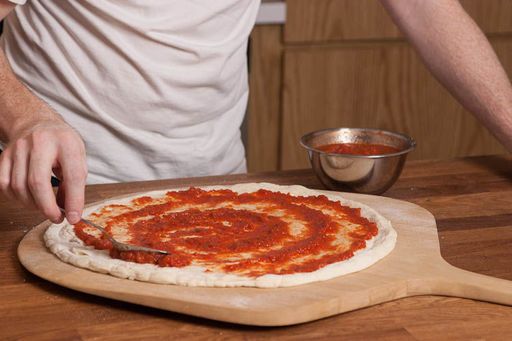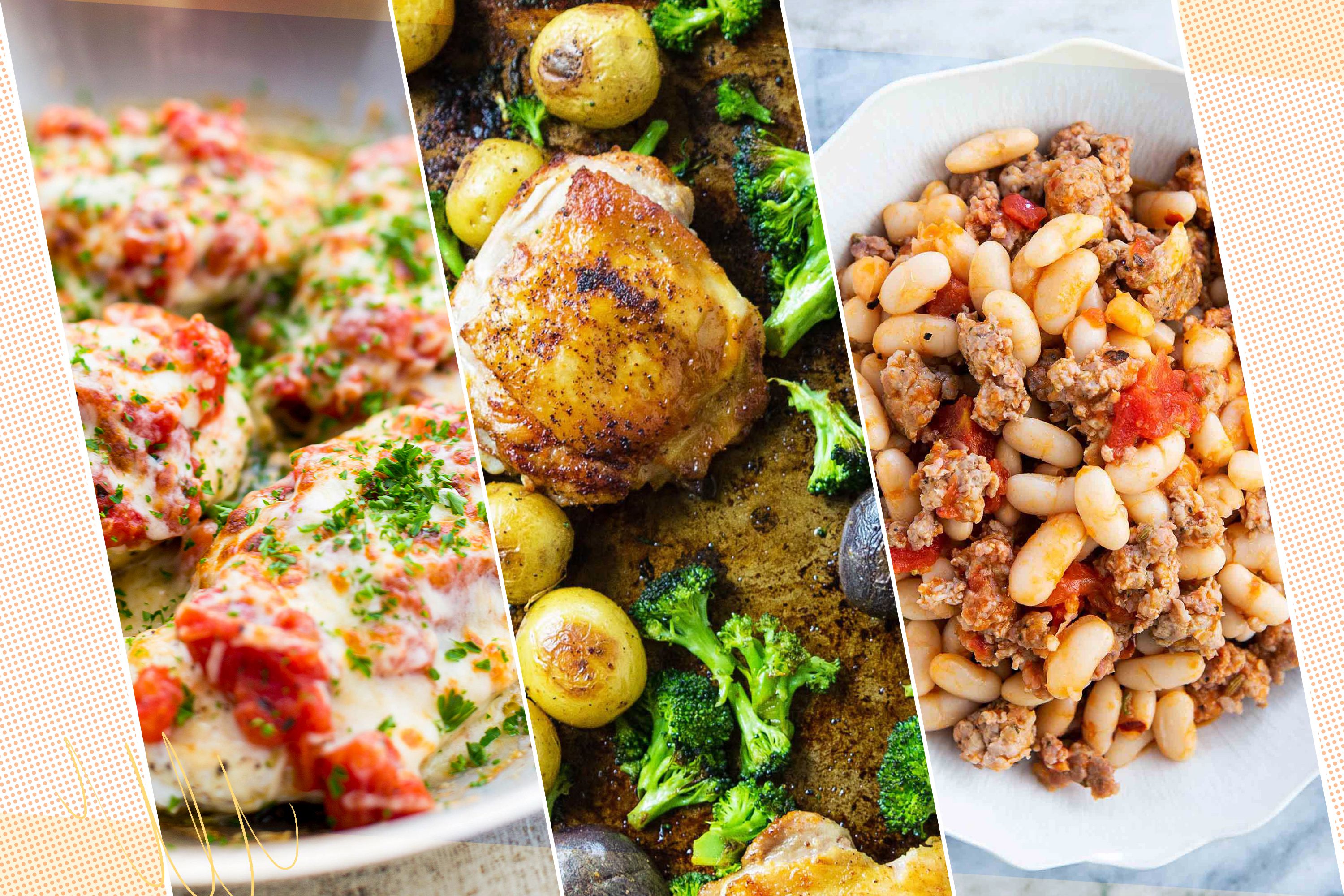
Whether you are making a main dish, side dish, or dessert, cooking faster is an excellent way to reduce the time you spend in the kitchen. Here are some ways to speed up your cooking. First, prepare ingredients ahead of time, laisse en place, and use a pressure cooker or convection oven. To make it easier to cook, slice the ingredients in thinner slices. Third, slice the meat thinly. The thinner the meat, the faster it will cook.
Laisse en place
Mise-en-place is the principle that you can make cooking faster by prepping everything beforehand. Preparing everything in advance will ensure that everything is ready for use. It's possible to make any necessary adjustments before you start working, such omitting an ingredient or adding a new ingredient. It's hard to make any changes after the work has started if you are working from a recipe.
Prepare ingredients in advance
Preparing ingredients ahead of time is a great way to cut cooking time. You can start preparing the ingredients you need early, such as nuts and dough, which will need time to chill in the fridge. This will make it easier to cook. This allows you to focus on other tasks, such as planning your meal or preparing the ingredients.

Using a pressure cooker
There are two main methods for releasing pressure from pressure cookers: natural release and quick release. The former method is usually the fastest because the pressure remains high inside the cooker while the other requires a natural release by opening the valve. However, this method can also overcook food and results in a high amount of carryover. You need to know how different ingredients are cooked in different cooking methods, no matter what your method.
A convection oven
Convection ovens are faster and more efficient for cooking. Convection ovens can produce crispier cookies and can save you time and energy, but not all foods will benefit from this cooking method. This article will tell you when and when not to use convection. This article also discusses pros and cons of convection cooking.
Using a grater
A grater can make food prep a whole lot faster. It can remove any type of food, including burned foods. A grater works in a different way to a knife. It can make hash browns quickly and mince many other vegetables. Using a grated grater will give you a smoother texture and better taste. It makes chopping vegetables easy.

A garbage bowl is a good idea.
You can make dinner fast with a garbage container. You can use this bowl as a serving bowl to serve salads and other food. You can match it with your other prep bowls. Rachael Raymond even made a glass garbage bowl you can use to make salads. When you're finished cooking, empty the bowl and wipe down your kitchen.
FAQ
How can you get motivated to cook well?
Sharing meals with family and friends is the best part of cooking. Cooking for yourself is much more enjoyable than cooking for others. Try making something new if your goal is to become more motivated to cook. This way, you will learn about new ingredients and techniques. Additionally, you can learn about new ingredients and techniques by incorporating recipes from different cultures into your cooking.
Where can you buy high quality kitchen equipment
You can order high-quality kitchen appliances online. There are many online shops that sell all sorts of kitchen tools. However, it is important to check reviews and ratings before making any purchase of kitchen equipment. Ask other owners if they have any recommendations.
What are basic cooking skills?
Basic cooking skills include the ability to read recipes and measure ingredients. If you want to be able to cook for yourself, then you need to learn these basic skills. Cooking is also a great way to save money since you don't have to eat out all the time.
How do you get hired as a Chef?
To get a job as chef, you must first complete a culinary arts degree. Next, you should join a professional association such as the American Culinary Federation (ACF). This organization offers certification exams and networking opportunities.
Which career path is best for someone who wants a career as a chef or chef? How can I get started in my career as an chef?
Apprenticeships are a great way to get started if you want to become a chef. Apprenticeships let you work for many years and pay no tuition fees. After completing your apprenticeship, you can apply for a position as a sous chef. Sous chefs assist cooks with tasks such as making salads, and desserts. They also supervise the operation of the restaurant.
How long does cooking take? How much time do I need?
It all depends on what level of skill you have. Some people can pick up basic cooking techniques within a day or two. Others may take months or years to master the basics of cooking.
The person who is learning to cook can vary in the amount of time they need. One example is that someone who has never tried cooking before would likely take more time to learn than someone who cooks often. Different types of cooking require different amounts of experience. Baking is more difficult than frying.
A specific technique will help you cook faster. Once you are proficient in that technique, you can move onto the next one. You don't need to worry about how many days or weeks it took to learn how to cook. You can just keep at it and enjoy the process.
How can leftovers be stored in the most efficient way?
Tupperware containers are great for storing leftovers. These containers preserve food freshness and stop odors from developing. They also keep foods warm longer. Freezer bags can be used to freeze any leftover food. When freezing food, place the bag inside another freezer bag so that air doesn't escape. After the food is frozen, place it in a sealed container like a ziplock bag.
Statistics
- On average, chefs earn $58,740 a year, according to the BLS. - learnhowtobecome.org
- The median pay for a chef or head cook is $53,380 per year or $25.66/hour, according to the U.S. Bureau of Labor Statistics (BLS). (learnhowtobecome.org)
- In the United States, the category is estimated at $23.2 billion annually and is growing faster than the market. (washingtonpost.com)
External Links
How To
How to make the perfect omelet
Omelets is one of my favourite breakfast foods. But how do they turn out so perfectly? There are many recipes and methods I tried, but none worked. Today, I'd like to share some tips with you in order to make delicious and fluffy omelets every day.
Before we start making omelets, let's remember that eggs are temperamental. It is important that eggs are fresh from an organic market and kept cool until used. The yolks and whites will not form properly if they aren't kept cold enough. This can make your omelets look bizarrely colored. If you want to make omelets right away, it's best not to use eggs that are too cold.
You might also try separating the egg before adding to the pan. You don't want any white to get mixed up with the yolk because this could cause the omelet to curdle.
The egg can burn if it is placed directly on the stovetop. Instead, heat the egg in a microwave for 10 seconds and then place it in a pan. The microwave heat cooks your egg just right, without it becoming too soft.
Next, let's talk about mixing the eggs. You want to mix the eggs thoroughly before you add them. You can do this by turning the bowl of your mixer upside down. Now shake the bowl vigorously. This allows the air to be whipped and the egg to be mixed thoroughly.
Now comes the fun part - pouring the milk into the mixture. Mix half of the milk with the eggs. Then fold the eggs in half into the remaining milk. Do not be alarmed if there are still egg streaks visible. Once the omelet flips, these streaks will disappear.
After folding the eggs fold the pan onto medium heat. When the oil starts to hot, wait for the pan to cook. Add 1/4 cup butter to the oil and swirl it around to coat all sides of the pan. The lid should be carefully opened. Sprinkle salt in the pan. An additional pinch of salt will prevent the omelet form sticking to your pan.
Once the omelet forms, cover the pan again. Let the top side set completely. Flip the omelet with a spatula, or flip it upside down. Cook the other side for another minute or two. Remove the omelet from the pan and serve immediately.
This recipe works best when you use whole milk.